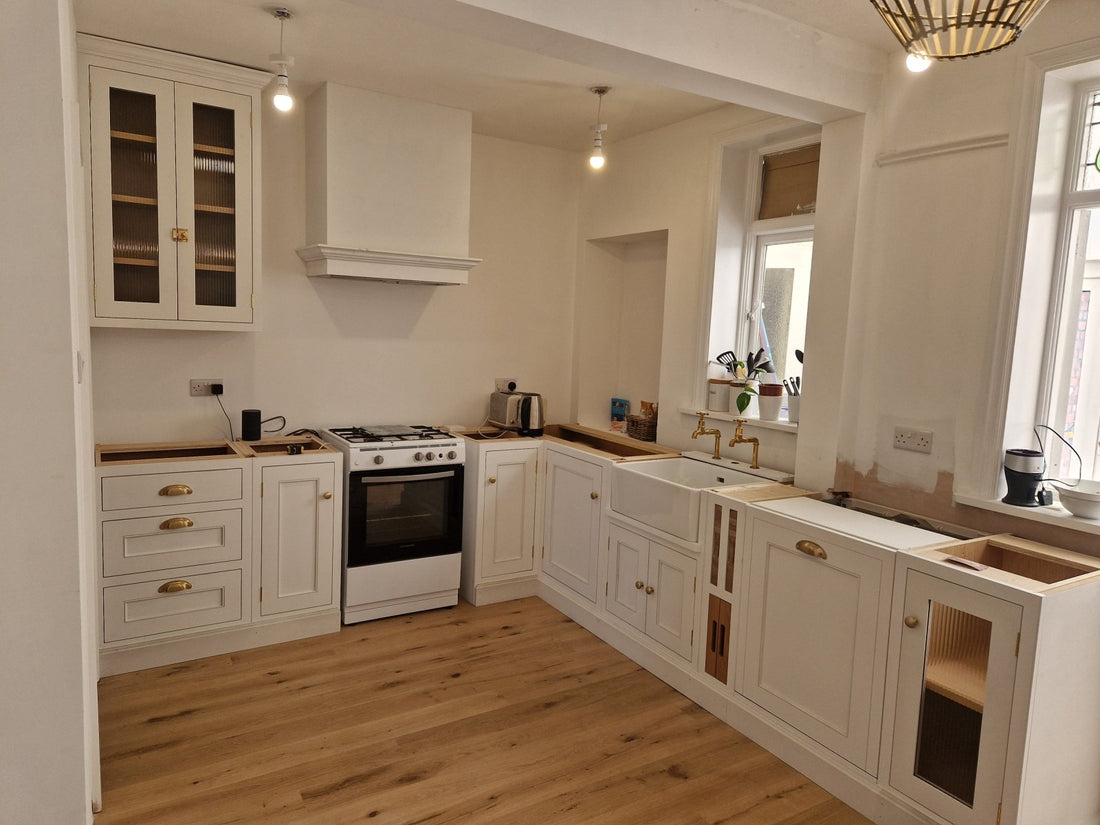
Caring for a Wooden Kitchen
Share
A wooden kitchen exudes warmth, character, and a timeless appeal. Whether you have classic oak cabinets or rustic farmhouse-style wooden countertops, taking care of your wooden kitchen is essential to maintain its natural beauty and durability. In this guide, we'll delve into the art of caring for your wooden elements, ensuring they stand the test of time and continue to infuse your kitchen with a touch of natural elegance.
- Regular Cleaning:
Keeping your wooden surfaces clean is the foundation of proper care. Wipe down countertops, cabinet doors, and wooden furniture regularly with a damp, soft cloth to remove dust and prevent the build-up of grime. Avoid using harsh chemical cleaners, as they can strip away the natural oils and finishes of the wood. Instead, opt for a mild dish soap mixed with water for a gentle yet effective cleaning solution.
- Gentle Drying:
Wood and excessive moisture are not the best of friends. After cleaning, make sure to thoroughly dry wooden surfaces to prevent water from seeping into the grain. Use a clean, dry cloth or towel to absorb any remaining moisture. Additionally, be vigilant about wiping up spills promptly to prevent them from causing long-term damage.
- Oil Treatments:
To maintain the lustre and resilience of your wooden kitchen, consider treating it with natural oils. Mineral oil, beeswax, or specialized wood oils can be applied to wooden countertops, cutting boards, and cabinet surfaces. This not only enhances the wood's natural beauty but also creates a protective barrier against moisture. Follow the manufacturer's recommendations for application frequency.
- Protective Coatings:
For high-use areas like countertops and tabletops, consider applying a protective coating to shield the wood from scratches and stains. Polyurethane, varnish, or a water-based sealant can provide an extra layer of defence without compromising the wood's appearance. Ensure the surface is clean and dry before applying any protective coating, and follow the product instructions for the best results.
- Mindful Heat and Humidity:
Wood is sensitive to fluctuations in temperature and humidity. Avoid placing hot pans directly on wooden surfaces to prevent heat damage. Additionally, maintain a consistent level of humidity in your kitchen to prevent the wood from expanding or contracting. Using a dehumidifier in damp environments or employing humidifiers in dry climates can help strike the right balance.
- Avoiding Abrasive Cleaners:
Steer clear of abrasive cleaning tools and materials that can scratch and damage the wood. Instead, opt for soft cloths, sponges, or brushes with gentle bristles when cleaning. If stubborn stains persist, use a paste made from baking soda and water for a non-abrasive yet effective cleaning solution.
- Regular Inspections and Maintenance:
Make it a habit to inspect your wooden kitchen elements regularly. Look for signs of wear, such as scratches, dents, or areas where the finish may be wearing thin. Address any issues promptly by refinishing or reapplying protective coatings as needed. Regular maintenance will extend the life of your wooden kitchen and keep it looking its best.
In summary:
Caring for a wooden kitchen is a labour of love that pays off in the long run. By incorporating these simple yet effective care practices into your routine, you'll ensure that your wooden elements retain their natural beauty and continue to bring warmth and character to your kitchen for years to come. Nurturing nature has never been so rewarding.
